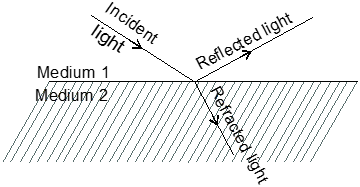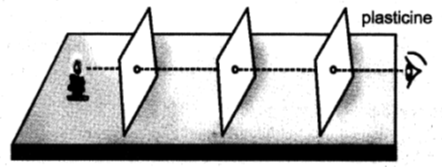- Books Name
- CBSE Class 7 Science Book
- Publication
- Param Publication
- Course
- CBSE Class 7
- Subject
- Science
Introduction :
Light is the form of energy which makes object visible. It means that we can see an object only when light from an object enters our eyes. The light may have been emitted by the object or may have been reflected by it. You may have also seen beams of light from the torch, head light of vehicles.
Sources of Light :
Those bodies which emit light in all directions are called sources of light. The sources can be point one or extended one. The sources of light are of two types :
(i) Luminous sources : Those objects which by itself emit light are called luminous sources.
Eg. : Sun and stars (natural luminous sources), electric lamps, candles and lanterns (artificial luminous sources).
(ii) Non-luminous sources : Those objects which do not emit light but become visible only when light from luminous objects falls on them. They are called non-luminous sources.
Eg. : Moon, planets (natural non- luminous sources), wood, table (artificial non-luminous sources) etc.
Medium of Light :
Substance through which light propagates or tends to propagate is called a medium of light.
According to the medium of light objects are divided into three parts :
(i) Transparent object :
Bodies that allow light to pass through them i.e. transmit light through them, are called transparent bodies.
Eg. : Glass, water, air etc.
(ii) Translucent object : Bodies that can transmit only a part of light through them are called translucent objects.
Eg. : Froasted or ground glass, greased paper, paraffin wax etc.
(iii) Opaque object : Bodies that do not allow light to pass through them at all are said to be opaque objects.
Eg. : Chair, desk etc.
Properties of light :
(i) Light is invisible form of energy .
(ii) Light does not require material medium for its propagation i.e. light can travel through vacuum.
(iii) The speed of light in free space (vacuum) is 3 × 108 m/s. Its speed is marginally less in air. Its speed decreases considerably in glass or water.
Some definition related to the light :
(A) Ray of Light :
The path along which light energy travels in a given direction is called ray of light. A ray of light is represented as a straight line. The arrow head on it gives the direction of light.
![]()
(B) Beam of Light :
A collection of rays of light is called beam of light. However, if the number of rays is too small then such a collection of rays is called Pencil of light.
(C) Parallel Beam :
When the rays of light travel parallel to each other, then the collection of such rays is called parallel beam of light. For example, sun rays entering into a room through a ventilator constitute a parallel beam .

Rectilinear Propagation of Light :
Light travels in a straight line. In vacuum or air, light travels with the velocity of 3 × 108 m/s.
Examples of rectilinear propagation of light in everyday life :
(i) When the sunlight enters through a small hole in a dark room, it appears to travel in straight lines.
(ii) The light emitted by the head light of a scooter at night appears to travel in straight lines.
(iii) If we almost close our eyes and try to look towards a lighted bulb, it appears to give light in the form of straight lines, which travel in various direction.
Behaviour of light at the interface of two media :
When light travelling in one medium falls on the surface of a second medium, the following three effects may occur :
(i) A part of the incident light is turned back into the first medium. This phenomenon is called reflection of light.
(ii) A part of the incident light is transmitted into the second medium along a changed direction. This phenomenon is called refraction of light.
(iii) The remaining third part of light energy is absorbed by the second medium. This phenomenon is called absorption of light.

2. To prove that light travels in a straight line.
• Take three cardboards of similar size and make a hole in the centre of each. Make sure that the size and position of the hole is the same in each cardboard .
• Now put the three cardboards in vertical position with the help of a brick of plasticine or clay in such a way that the holes in the three cardboards are in a straight line.
• Place a lighted candle in front of the cardboards as shown in figure. Look through the hole of the last cardboard.
Are you able to see the flame of the lighted candle? What happens when you displace one of the cardboards?
The flame can be seen clearly through the holes in the first case. On diplacing one of the cardboards, no flame can be seen as light cannot bend.
Light travels in a straight line. No flame can be seen when the holes of the three cardboards are not in a straight line because light cannot bend.


 Grow Career Publication
Grow Career Publication
 Param Publication
Param Publication
